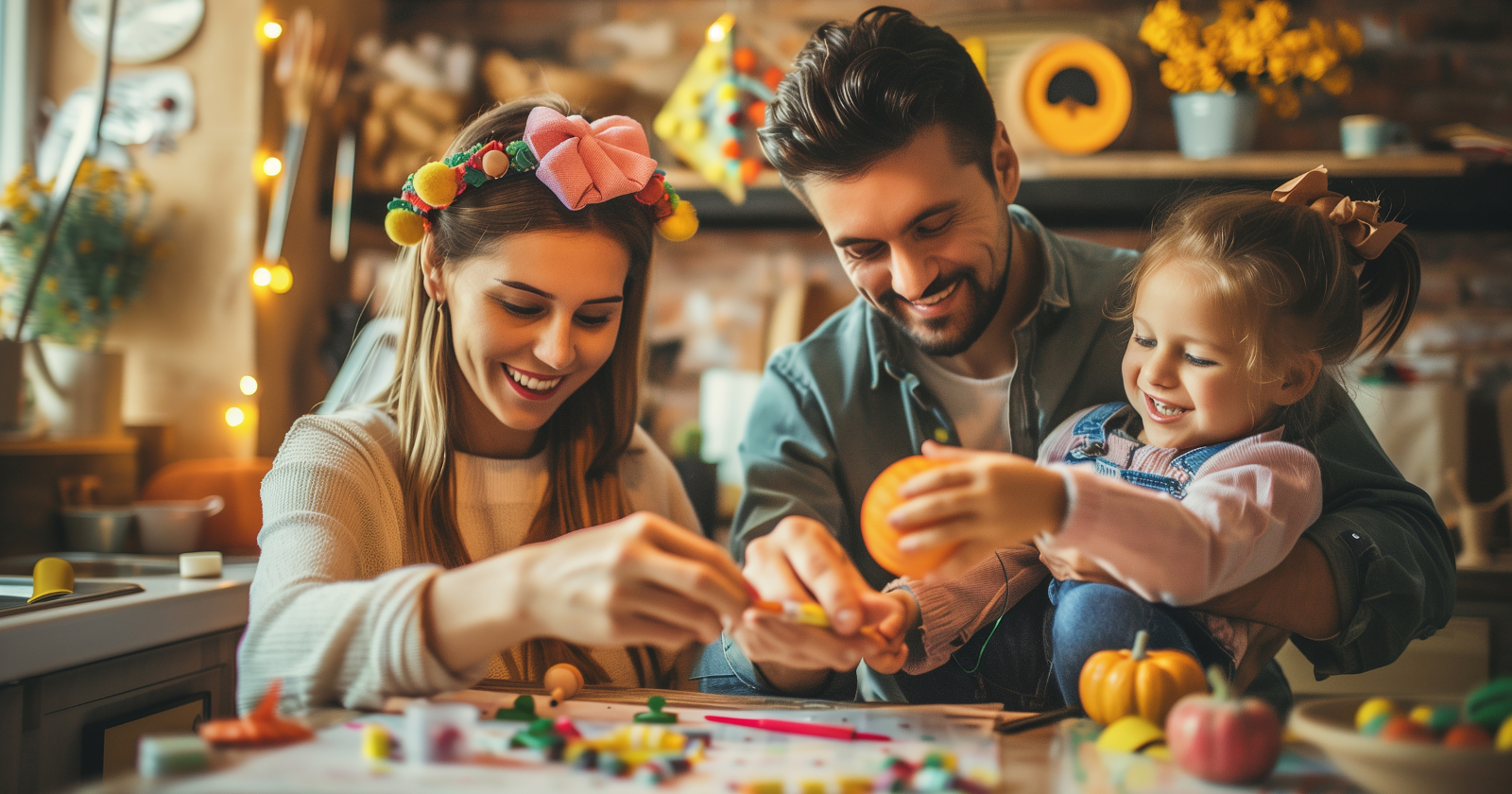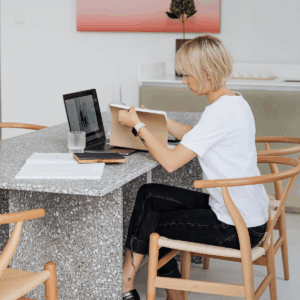There’s something almost magical about the way children disappear into a pile of craft supplies.
Give them a few scraps of paper, some paint, and maybe a cardboard box, and suddenly they’re engineers, dreamers, and artists all at once.
In our home, crafts aren’t just a rainy-day activity, they’re a kind of gentle teacher. They teach my kids things I couldn’t explain any better if I tried.
Chief among them? Patience and problem-solving.
Let’s talk about how that happens, one glue stick and crayon box at a time.
1. Waiting becomes part of the fun
Have you ever watched a five-year-old wait for paint to dry? It’s practically an Olympic event in self-control.
Ellie, my oldest, used to hover over her watercolor paintings, blowing on them like birthday candles, desperate to move on to the next step.
Over time, she learned that waiting isn’t wasted. It’s part of the creative process. The magic happens in those pauses.
Kids start to notice how colors settle, textures shift, and what they can plan next while they wait.
This is something I’ve noticed time and time again, and many child development experts agree that projects requiring waiting and follow-through strengthen a child’s ability to self-regulate and stay patient..
Craft time becomes quiet practice for life’s waiting rooms.
2. Mistakes turn into experiments
If I had a dollar for every “Oops!” in our art corner, I could probably buy a lifetime supply of glue sticks.
But that’s the beauty of it. Mistakes are just invitations to try again differently.
When the tower of popsicle sticks collapses or the clay sculpture doesn’t hold shape, kids start thinking, What if I try this instead?
This kind of thinking is the root of problem-solving. It shifts their focus from perfection to curiosity.
And, honestly, it’s a lesson I’ve had to relearn as an adult because perfectionism can sneak in even when we’re just making crafts.
3. Planning gives them ownership
When we start a new project, I like to step back and let the kids decide what it’s going to be. Sometimes Ellie will sketch it out, other times she’ll just dive in and adjust as she goes.
- 8 quiet signs someone is struggling with deep loneliness (even if they seem fine) - Global English Editing
- 7 things chronically lonely people do during Christmas without realizing how it looks - Global English Editing
- Psychology says people who speak with natural authority share these 9 verbal habits - Global English Editing
This planning stage helps kids practice executive functioning, the same skill set they’ll later need for organizing homework or tackling bigger life goals.
It’s also a quiet exercise in patience because they have to think before doing.
Research suggests that kids who start helping out with small chores by age 4 or 5 tend to have more self-confidence and a stronger sense of capability.
That sense of capability grows when they’re trusted to plan and lead their own creations too.
4. They learn to regulate emotions through expression
Some days, Ellie’s “art” looks more like an emotional release, angry scribbles after a rough morning or big swooping lines when she’s bursting with energy.
I’ve learned not to correct, but to watch. Art gives kids a way to externalize what they can’t yet verbalize.
Daniel J. Siegel, MD, author of The Whole-Brain Child, calls this “name it to tame it,” helping children identify feelings in order to manage them.
He notes, “Helping children name their feelings (‘name it to tame it’) when they’re upset can help them calm down and learn to regulate emotions.”
When art becomes that outlet, kids don’t just express emotion, they process it. And that’s one of the most powerful problem-solving tools they can carry into the world.
5. They see that every problem has more than one solution
One morning, Ellie decided to make “a house for fairies” out of twigs and moss. Halfway through, the roof kept collapsing. Frustrated, she looked at me and said, “Maybe fairies don’t need roofs.”
And just like that, she’d reframed the problem.
Through trial and error, kids learn that there’s no single “right” way to create or to solve a problem. They start to look for options rather than obstacles.
That mindset grows resilience. When plans fall apart, they adapt with curiosity instead of frustration. What looks like a setback becomes a new direction.
6. Collaboration builds patience and empathy
Crafts don’t always go smoothly when there’s more than one child involved. (You’ve never seen drama until you’ve seen two kids fight over who gets the purple marker.)
But those moments teach something valuable. Kids learn to wait their turn, listen to each other’s ideas, and sometimes compromise on creative direction.
In our house, we make a lot of “collage tables,” where everyone contributes to one big project. It’s messy, unpredictable, and occasionally chaotic, but it’s also a mini laboratory for learning teamwork and empathy.
They realize that creativity is richer when shared, and that patience often looks like letting someone else’s idea shine.
7. Crafting slows down the pace of modern childhood
Screens promise instant gratification. Crafts ask for something slower and deeper.
There’s something grounding about using your hands, folding, cutting, gluing. It teaches kids that joy doesn’t always come with flashing lights or quick dopamine hits.
Instead, satisfaction grows in layers, like a watercolor drying into its final hue.
For me, that’s part of why I lean toward low-screen living.
When the kids are covered in paint and I’m sweeping up glitter, I can see it clearly. Creativity takes time, and that time is sacred.
8. Crafts connect body and mind
Have you ever noticed how a child’s whole body gets involved when they’re crafting? They lean in close, hold their breath while cutting, and sometimes even hum to themselves.
Rudá Iandê, author of Laughing in the Face of Chaos, writes, “The body is not something to be feared or denied, but rather a sacred tool for spiritual growth and transformation.”
That line reminded me that creativity begins in the senses, through movement, touch, and presence.
Through art, kids learn patience not by thinking about it, but by feeling it in their hands. They learn problem-solving not as a theory, but as movement, measured, deliberate, alive.
This book has inspired me to approach creativity in our home as a whole-body experience.
When the mind and body work together, children learn to trust their instincts and flow through frustration instead of resisting it.
9. Creativity teaches them to let go
This last one might be the hardest for parents too.
After all that effort, the cutting, painting, gluing, it’s tempting to want to frame every project and protect it forever.
But sometimes, the most powerful lesson comes when the glitter fades or the paper crumples.
Kids learn that not every creation lasts. Some things are meant to be made, enjoyed, and then released. And that’s okay.
In our house, that means letting art evolve and dissolve, recycled into new ideas, new crafts, new days.
It’s a gentle reminder that both patience and problem-solving grow best in the soil of acceptance.
Final thoughts
The more I watch my kids create, the more I realize that arts and crafts are less about the end product and more about the practice of slowing down, trying again, and staying curious.
Through those sticky, colorful moments, children learn to approach life with a creative mindset: one that says, I can figure this out, and I can wait for it to unfold.
And maybe, just maybe, that’s what patience and problem-solving have in common, trusting that even when things feel messy, the process is working.
So the next time your kitchen table is covered in paint and paper, remember, something much deeper is unfolding beneath the surface.
You’re not just raising artists. You’re raising thinkers, feelers, and patient little humans who believe they can find beauty, even in the mess.



